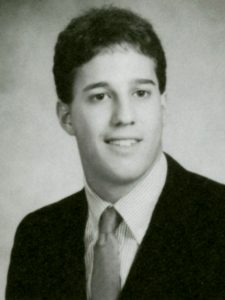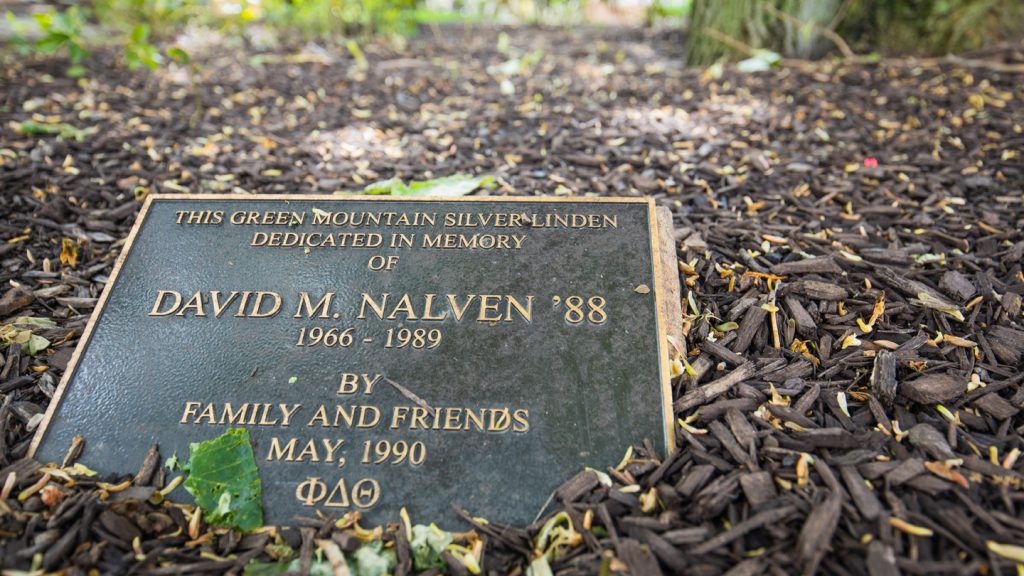Furthering a Legacy
The David Nalven ’88 Fund, created in his memory by his family and supported by friends, is a living reminder of the inspiration and career preparation he received at Lafayette and the importance of providing opportunities for promising, driven students to learn outside the classroom.

David Nalven ’88
Created in 1990, the fund now supports three students a year who conduct primarily ecological field-oriented or environmental research over the summer. It is a reflection of the path followed by David Nalven, whose summer research at Lafayette funded by a National Science Foundation grant to Nancy McCreary Waters, associate professor of biology, opened opportunities. Graduating with a major in biology and minor in geology, David landed his dream job as an environmental scientist in ERT’s Environmental Services division, working mostly out in the field. He died in a tragic automobile accident in 1989 while contemplating his next career move, ending a promising career as a scientist.
Friends and family searched for ways to memorialize him, and first planted a Green Mountain linden tree across Sullivan Road from Kunkel Hall beside Van Wickle Hall. “It just snowballed from there,” says Lisa Nalven, David’s sister.
A memorial bench now sits in the shade of David’s tree, providing a resting spot for students seeking solitude to work or a comfortable place to chat amid the lush plantings. Every summer the Nalven family returns to campus to meet the fellows, learn about their projects and aspirations, and take photographs on David’s bench as well as beside the memorial plaque that will move with biology into the new Rockwell Integrated Sciences Center. This summer will mark the 59th student supported as a Nalven Summer Research Fellow. It is a legacy of learning.

With revenue from the fund, the Nalven family has created a third memorial.
“Last spring we talked about taking a portion of the principal and separating it,” says Lisa Nalven. “Instead of adding more summer fellows, the idea was to establish a prize.”
Being conferred on a junior, the Nalven Prize recognizes the value of helping students build their résumé in time for meaningful support of graduate school and career applications. It was awarded for the first time this spring to a junior at the All-College Honors Convocation.
Waters furthers David Nalven’s legacy by staying in touch with students who benefit from the fund, communicating with the Nalven family, and sharing thank you notes and other expressions of gratitude from students. Susanne Metzgar McMenamy ’92 was the first Nalven Fellow, following her summer research experience in the Waters laboratory by earning master’s degrees from Rutgers and Lehigh universities. After work in environmental consulting, similar to David’s pathway, she now teaches at Roberto Clemente Charter School in Allentown, Pa., nurturing the next generation of high school students to study biology and life sciences.
Regina Lamendella ’04 was a 2003 Nalven Fellow with now-retired Lorraine Mineo. She is now an associate professor at Juniata College, having completed master’s degrees and earned her doctorate at University of Cincinnati. “I am always humbled by the achievements of my students who, like David, were able to find their own niche amid the opportunities we offer at Lafayette,” says Waters. “It is the essence of what we do here, and David’s memory is a true example to each cohort of Nalven Fellows.”
Nalven funds support students who demonstrate curiosity in the laboratory, exhibit a passion for fieldwork, perform commendably in the classroom, show self-reliance, and display a commitment of character to the wider campus community.
“I knew him as a little brother, but he was a kind soul, a great friend to many, so this is in keeping with who he was,” Lisa Nalven says. “My family values education and is well aware of the difference these kinds of opportunities make. There was no funding like this when I was in college.
“Now I see the opportunities my kids have had outside the classroom,” she says. “These are the things that make a difference.”